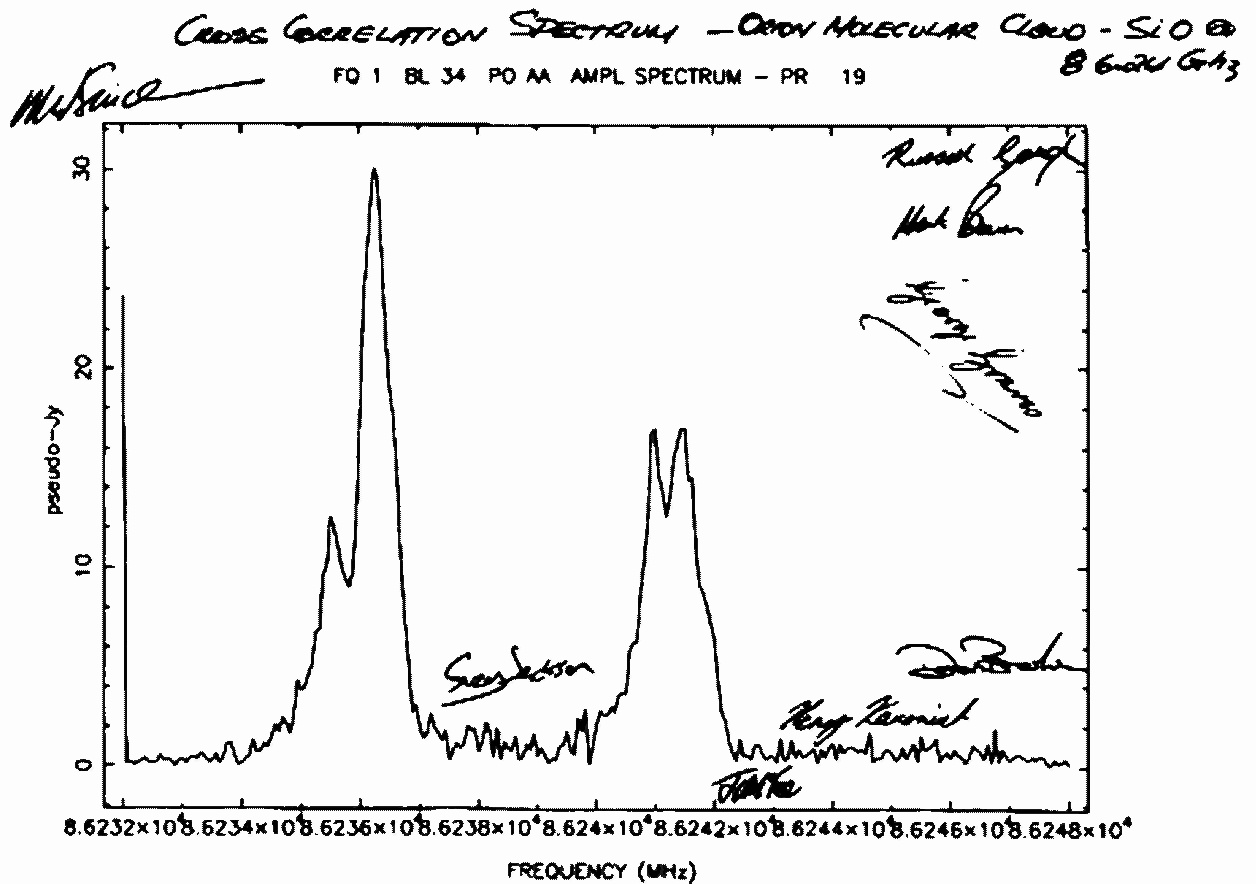First millimetre light for upgraded Australia Telescope
Installed and tested in late November 2000, new world-leading technology has made the Australia Telescope Compact Array (ATCA) the first millimetre-wave interferometer in the Southern Hemisphere. At the heart of the new millimetre receivers are indium phosphide chips, cooled to 20 K (-253° C), the product of a joint effort between the Australia Telescope National Facility (ATNF) and the CSIRO Division of Telecommunications and Industrial Physics (CTIP).
On Thursday 30 November 2000, three years of designing, building, and testing for the Narrabri and Sydney engineering groups came to a climax at the ATCA when two of the six dishes were fitted with the new 3-mm receiving systems and trained on a star-forming region within the Orion nebula containing silicon monoxide (SiO) masers. At 11.45 pm the telescope captured its first cosmic millimetre-wave photons, achieving "first light". Figure 1 shows the cross-power spectrum resulting from these first observations, at a frequency of 86.243 GHz. The millimetre photons from this source are produced by excited SiO molecules which are embedded within the star-forming clouds.

Figure 1: "First light" - the Australia Telescope's first observation as an interferometer working in the 3-mm band with a single baseline of length 31 m. The spectrum shows the SiO maser emission from a star-forming region in the Orion nebula. The integration time was several minutes. No calibration has been applied.
Currently a project science team is using the ATCA in its 3-mm observing mode, looking at a variety of astronomical sources and investigating the performance of the system. Some of the sources observed to date include the SiO masers in the circumstellar envelopes of the evolved stars VX Sgr, R Dor, and R Aqr, and HCO+ absorption against the nuclear continuum source in the radio galaxy Centaurus A. Many of the team's initial results are available on the web at http://www.atnf.csiro.au/mnrf/3mm_details.html
The prototype 3-mm receiving systems, installed on two of the Australia Telescope's six dishes, cover the frequency range 84 - 91 GHz. This current system will progressively be upgraded to the full array of six antennas with receivers covering a frequency range from 84 GHz to around 115 GHz. Routine millimetre observing is expected to start in mid-2003.
The chip at the heart of the new receiving system is an indium phosphide "monolithic microwave integrated circuit" (MMIC). This is one of several components being jointly developed by the ATNF and its sister CSIRO Division, CTIP (formerly the CSIRO Division of Radio Physics) under a special program established by former CSIRO Chief Executive, Malcolm McIntosh, to develop millimetre-wave integrated circuits for radio astronomy and telecommunications.
The upgrading of the Australia Telescope to work at millimetre wavelengths is funded by the Australian Federal Government under its Major National Research Facilities (MNRF) Program, and by CSIRO. More information on the MNRF projects underway at the ATNF is available on the web at http://www.atnf.csiro.au/mnrf/mnrf_outline.html

An aerial view of the Australia Telescope Compact Array taken during millimetre test observations using antennas 3 and 4 (photo by Dave McConnell, ATNF).
The MNRF science and engineering team
For further information contact Baerbel Koribalski
(bkoribal@atnf.csiro.au)
